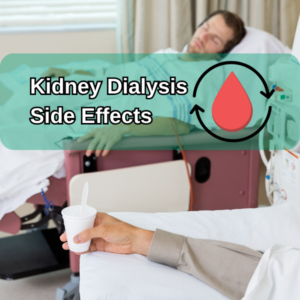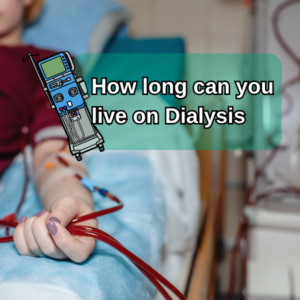+90 533 813 89 77
info@bookingforhealth.com

Things to Know About Kidney Diseases
Is kidney disease curable?
The curability of kidney disease depends on the specific cause and stage of the disease. Some forms of kidney disease, such as acute kidney injury (AKI) caused by infections or medications, may be reversible with appropriate treatment. However, chronic kidney disease (CKD), which progresses over time and may have various underlying causes, may not be completely curable. Treatment aims to manage symptoms, slow disease progression, and improve quality of life.
Is kidney disease hereditary?
Some forms of kidney disease have a hereditary component. Polycystic kidney disease (PKD) is an example of a genetic kidney disorder that can be passed down through families. However, not all kidney diseases are hereditary, and many cases of kidney disease are caused by other factors, such as diabetes or hypertension.
How many stages of kidney disease are there?
Chronic kidney disease (CKD) is typically classified into five stages, ranging from stage 1 (mild kidney damage) to stage 5 (end-stage renal disease or kidney failure). The stages are determined based on the level of kidney function, as measured by glomerular filtration rate (GFR) and the presence of kidney damage.
How to prevent kidney disease?
To prevent kidney disease, it is essential to maintain a healthy lifestyle and manage risk factors. This includes adopting a balanced diet, staying hydrated, maintaining a healthy weight, exercising regularly, avoiding tobacco and excessive alcohol consumption, and managing conditions like diabetes and hypertension.
How is kidney disease diagnosed?
Kidney disease is diagnosed through various methods, including blood tests to assess kidney function (e.g., creatinine and glomerular filtration rate), urine tests to check for protein or blood in the urine, imaging tests (e.g., ultrasound or CT scan) to evaluate kidney structure, and kidney biopsy in certain cases.
Where do you itch with kidney disease?
Itching with kidney disease can occur in various areas of the body, but it is commonly reported to affect the skin on the back, legs, and arms. This itching, also known as uremic pruritus, can be a result of toxins building up in the blood due to impaired kidney function.
What tea is good for kidney disease?
Herbal teas like dandelion tea, nettle tea, and chamomile tea are often considered beneficial for kidney health. These teas may have diuretic properties and antioxidant effects that could support kidney function. However, it’s essential for individuals with kidney disease to consult their healthcare provider before incorporating any herbal teas into their diet.
How many stages of kidney disease?
Chronic kidney disease (CKD) is typically classified into five stages, ranging from stage 1 (mild kidney damage) to stage 5 (end-stage renal disease or kidney failure). The stages are determined based on the level of kidney function, as measured by glomerular filtration rate (GFR) and the presence of kidney damage.
How to reverse kidney disease?
Reversing kidney disease depends on the underlying cause and the stage of the disease. Some forms of kidney disease, such as acute kidney injury (AKI), may be reversible with appropriate treatment. For chronic kidney disease (CKD), early detection, lifestyle changes, and managing underlying conditions can help slow disease progression and improve kidney function. However, CKD in later stages may not be completely reversible.
What is chronic kidney disease stage 3a?
Chronic kidney disease (CKD) stage 3a is a classification based on the level of kidney function. It indicates moderately reduced kidney function with a glomerular filtration rate (GFR) between 45 and 59 milliliters per minute per 1.73 square meters. In stage 3a, there may be mild to moderate kidney damage.
What is stage 3a chronic kidney disease?
Stage 3a chronic kidney disease (CKD) refers to moderately reduced kidney function with a glomerular filtration rate (GFR) between 45 and 59 milliliters per minute per 1.73 square meters. In this stage, there may be mild to moderate kidney damage.
What is the latest treatment for chronic kidney disease?
The treatment for chronic kidney disease (CKD) depends on the specific cause and stage of the disease. Treatment aims to manage symptoms, slow disease progression, and prevent complications. Depending on the individual’s condition, treatments may include lifestyle changes, medications, dietary modifications, and, in advanced stages, dialysis or kidney transplantation.
How to relieve itchy skin from kidney disease?
To relieve itchy skin from kidney disease, it’s essential to address the underlying cause. Treatments may include managing kidney disease with medications, following a kidney-friendly diet, and staying adequately hydrated. Additionally, using fragrance-free and hypoallergenic moisturizers, avoiding hot showers, and wearing loose-fitting clothing may provide relief.
What is stage 3a kidney disease?
Stage 3a kidney disease is a classification of chronic kidney disease (CKD) based on the level of kidney function. It indicates moderately reduced kidney function with a glomerular filtration rate (GFR) between 45 and 59 milliliters per minute per 1.73 square meters. In this stage, there may be mild to moderate kidney damage.
Does kidney disease cause itching?
Yes, kidney disease can cause itching, also known as uremic pruritus. The exact mechanism is not fully understood, but it is believed to be related to the buildup of waste products and toxins in the blood due to impaired kidney function.
Does kidney disease make you tired?
Yes, kidney disease can cause fatigue and tiredness. When the kidneys are not functioning properly, waste products and toxins can build up in the body, leading to a condition called uremia. Uremia can cause various symptoms, including fatigue and weakness.
How to reverse chronic kidney disease stage 5?
Chronic kidney disease (CKD) stage 5, also known as end-stage renal disease (ESRD) or kidney failure, is typically irreversible. At this stage, kidney function is severely impaired, and the kidneys can no longer adequately filter waste products from the blood. Treatment options for stage 5 CKD may include dialysis or kidney transplantation to support kidney function.
What is stage 3b kidney disease?
Stage 3b kidney disease is a classification of chronic kidney disease (CKD) based on the level of kidney function. It indicates moderately reduced kidney function with a glomerular filtration rate (GFR) between 30 and 44 milliliters per minute per 1.73 square meters. In this stage, there may be moderate kidney damage.
What is the biggest indicator of kidney disease?
The biggest indicator of kidney disease is the presence of protein or blood in the urine. Elevated levels of protein (proteinuria) or the presence of blood (hematuria) can be signs of kidney damage and impaired kidney function. Other indicators include changes in creatinine levels, decreased glomerular filtration rate (GFR), and abnormalities in electrolyte levels.
What laxatives are safe for kidney disease?
Individuals with kidney disease should be cautious when using laxatives, as some laxatives may contain ingredients that can affect kidney function. Bulk-forming laxatives, like psyllium, are generally considered safer for people with kidney disease. However, it is essential to consult a healthcare professional before using any laxative, as they can provide personalized advice based on the individual’s condition.
What stage of kidney disease?
“Stage of kidney disease” typically refers to the classification of chronic kidney disease (CKD) based on the level of kidney function. CKD is categorized into five stages, ranging from stage 1 (mild kidney damage with normal or mildly reduced GFR) to stage 5 (end-stage renal disease or kidney failure with severely reduced GFR). The stage is determined based on factors like GFR, the presence of kidney damage, and the presence of symptoms.
Which alcohol is good for kidney disease?
It is generally advisable for individuals with kidney disease to limit alcohol consumption. If alcohol is consumed, it should be done in moderation. Red wine, in particular, contains antioxidants like resveratrol that may have some health benefits when consumed in moderation. However, it is crucial to consult a healthcare professional before making any changes to alcohol consumption, especially for those with kidney disease.
Are kidney stones considered kidney disease?
Yes, kidney stones are considered a form of kidney disease. Kidney stones are hard mineral and salt deposits that can form in the kidneys and cause various symptoms, such as severe pain, blood in the urine, and urinary tract infections. While kidney stones may not always lead to chronic kidney disease, they can be a significant health concern and require medical attention.
How does diabetes cause kidney disease?
Diabetes can cause kidney disease, known as diabetic nephropathy, due to high blood sugar levels over time. Elevated blood sugar can damage the small blood vessels in the kidneys responsible for filtering waste from the blood. As a result, the kidneys become less efficient in their function, leading to kidney damage and the development of kidney disease.
How to avoid kidney disease?
To reduce the risk of kidney disease, one can follow these steps:
- Manage underlying health conditions like diabetes and hypertension effectively.
- Adopt a balanced diet low in sodium, processed foods, and high in fruits, vegetables, and whole grains.
- Stay hydrated by drinking an adequate amount of water daily.
- Limit alcohol consumption and avoid smoking.
- Maintain a healthy weight through regular physical activity.
- Regularly monitor kidney health through check-ups and screenings, especially if there are risk factors present.
Is cranberry juice good for kidney disease?
Cranberry juice may have some benefits for kidney health, as it may help prevent urinary tract infections (UTIs) due to its ability to prevent bacteria from adhering to the urinary tract. However, cranberry juice is also naturally high in oxalates, which can contribute to the formation of kidney stones in some individuals. People with kidney disease should consult their healthcare provider before consuming cranberry juice regularly.
What are stages of kidney disease?
The stages of kidney disease are classified as follows:
Stage 1: Kidney damage with normal or mildly reduced glomerular filtration rate (GFR) ≥90 ml/min/1.73m².
Stage 2: Kidney damage with mildly to moderately reduced GFR 60-89 ml/min/1.73m².
Stage 3: Moderately reduced GFR 30-59 ml/min/1.73m² (Stage 3a: 45-59 ml/min/1.73m², Stage 3b: 30-44 ml/min/1.73m²).
Stage 4: Severely reduced GFR 15-29 ml/min/1.73m².
Stage 5: End-stage renal disease (ESRD) or kidney failure, GFR <15 ml/min/1.73m².
What are the 5 stages of kidney disease?
The five stages of kidney disease are:
Stage 1: Kidney damage with normal or mildly reduced GFR.
Stage 2: Kidney damage with mildly to moderately reduced GFR.
Stage 3: Moderately reduced GFR (Stage 3a: 45-59 ml/min/1.73m², Stage 3b: 30-44 ml/min/1.73m²).
Stage 4: Severely reduced GFR.
Stage 5: End-stage renal disease (ESRD) or kidney failure.
What are the symptoms of stage 1 kidney disease?
In stage 1 kidney disease, kidney damage may be present, but the kidneys still function normally, and there are often no noticeable symptoms. Some individuals may experience mild symptoms, such as increased urination, foamy urine, or slight fatigue. Regular check-ups and screenings are essential for early detection and appropriate management.
What foods to avoid with kidney disease?
Individuals with kidney disease may need to limit certain foods that can strain the kidneys or worsen existing conditions. Common foods to avoid or limit include high-sodium foods, processed and canned foods, high-potassium foods (e.g., bananas, oranges, potatoes), high-phosphorus foods (e.g., dairy, nuts, colas), and high-oxalate foods (e.g., spinach, beets, chocolate).
What is stage three kidney disease?
Stage three kidney disease is a classification of chronic kidney disease (CKD) where the glomerular filtration rate (GFR) is moderately reduced between 30 and 59 ml/min/1.73m². Stage 3 is further divided into two sub-stages:
Stage 3a: GFR of 45-59 ml/min/1.73m²
Stage 3b: GFR of 30-44 ml/min/1.73m²
In stage 3, there may be mild to moderate kidney damage, and it is essential to manage the condition properly to slow disease progression.



